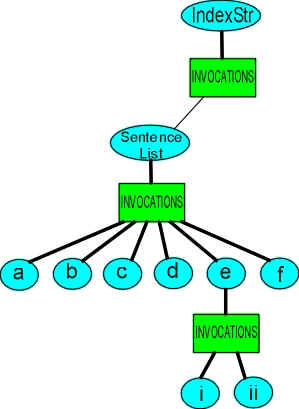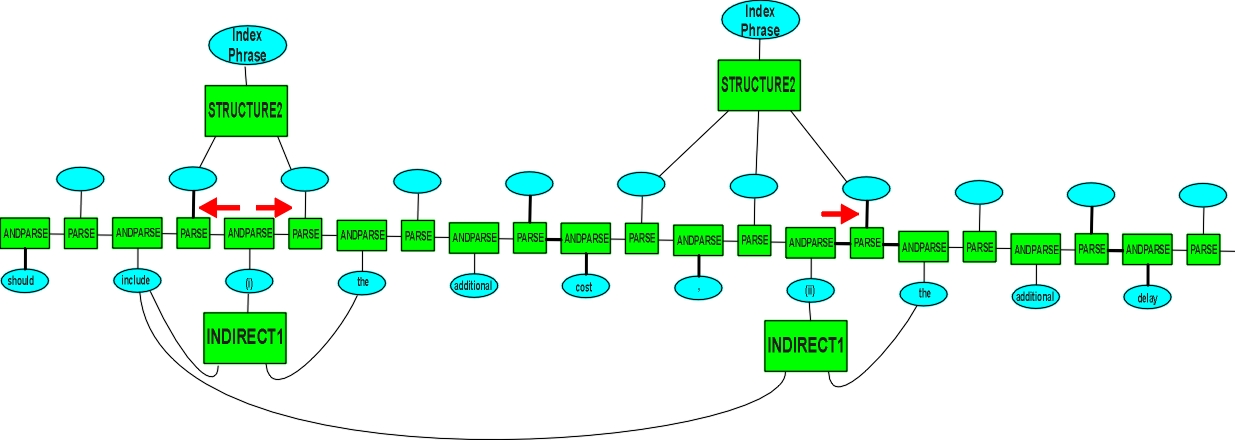

Embedded lists are often used in scientific and legal text, as a way of making it clear where the different items begin and end.
The report should include (i) the additional cost, (ii) the additional delay compared with the work schedule in the report prepared on 21st June and approved by the committee at its meeting on the 29th June, and (iii) any changes to the EIS.
There are effectively three sentences here, with a common head (and, in some examples, a common tail). The second item should see itself as
The report should include the additional delay compared with the work.....
When the embedded indexing is seen by the Tokeniser, it builds a structure to represent the indexing, and handles nesting of indexes. With nesting, the index structure looks as shown. This structure allows us to quickly find the first item in the list, and the list introducer, immediately to its left.
Operators such as NOCHILD and ONLYCHILD are hung off the word token in the parse chain to control the finding of parents. We can use another operator (INDIRECT1) to indicate indirection, so that the parents of the token pointed to are found, allowing the "include" to appear to be present at multiple points in the chain, resulting in a structure like

The indirection structure is built when the IndexPhrase is recognised. As with parentheticals, no decision is made on either side of the IndexString symbol (the "(ii)") until the IndexPhrase structure is completed (the "(ii)" can be the neighbour of anything, the IndexPhrase cannot).
The result is that, at the base level, "should include" sees itself followed by a noun phrase, and the noun phrase sees itself following a verb, but above that level, the IndexPhrase symbols divide the items, allowing them ultimately to be combined into an ObjectGroup, with in this case an AND (drawn from the end item) controlling the combination of the group.
The linking arrangement isn't so critical for a verb and a noun, but other introducers, such as the "to" for an Infinitive, do require to see each other clearly to avoid confusion, as
The company hoped to (i) make a profit, (ii) reward shareholders, and (iii) be a good corporate citizen.
Short example sentences don't look too problematic, because they have to be recognised without indexing anyway, but when one item in the internal list can ramble on for several lines, indexing can restore some clarity.
One defect with this approach is that some writers are not punctilious about the form of the introducer being valid for each member of the list, so that some tolerance for mismatch may need to be introduced for indirection.
A similar indexing scheme is used for parameters in an expression, such as
The amount of (x) $50, divided by (y) the area, divided by (z) the number of users.
The position of the indexes allows differentiation with list indexing.